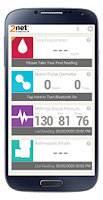Many different vendors are developing their own interoperability capability, including home monitoring devices.
Will these silos of interoperability remain isolated ? This is the unanticipated result of intense industry competition. Yes, we may all have interoperative software, but who will be 'on the line'.
The lastest entry into the interoperable market is a company already well known and established in the internent and cell network, both as a device and a chip manufacturer.
If you’ve spent some time in the mHealth and mobile health space (which are basically the same thing), then you’ve likely run into Qualcomm. They’ve made a big investment in that space with their Qualcomm Life initiative together with their 2Net platform that helps home health devices connect and share data.
In many ways it made a lot of sense for a wireless provider (mostly chips from my understanding) to get involved in this space since it was a way for them to sell more chips. It seems like every new medical device needs some wireless technology embedded in it. On the other hand it sometimes felt awkward since Qualcomm really doesn’t directly sell products to healthcare organizations or consumers.
Qualcomm's 2net technology
Solving Medical Device Interoperability – Is Qualcomm Building that Platform? | EMR and HIPAA
The 2net™ Platform* from Qualcomm Life is truly novel, offering a set of wireless health solutions that can elegantly and reliably capture and deliver medical device data to integrated portals or databases from nearly any customers’ or technology partners’ wireless medical device for storage in a system designed for security and interoperability. It’s a whole new way of connecting devices and liberating biometric data so that it becomes ubiquitous across the continuum of care.
The 2net Platform is a cloud-based system designed to be universally-interoperable with different medical devices and applications, enabling end-to-end wireless connectivity while allowing medical device users and their physicians or caregivers to easily access biometric data. With two-way connection capabilities and a broad spectrum of connectivity options, the 2net Platform will change the way you do business.
The 2net Platform supports secure socket layer (SSL) communication of data and is FDA listed as a Class I Medical Device Data System (MDDS) in the U.S., Class I MDD and CE registered in Europe, and Class I in Canada. As an MDDS, the 2net Platform is designed, developed and manufactured in accordance with a quality system compliant with ISO13485 standards, meaning it aligns with the quality requirements of U.S. and international regulatory agencies in the health care industry.
There are four gateways onto the 2net Platform’s data center:
- A standalone FDA-listed external device – the 2net Hub*
- An FDA-listed software module that connects mobile computing devices – 2net Mobile Core*
- Medical devices with an embedded cellular component
- Service platform integration between the FDA-listed 2net Platform to customer and technology partner service platforms using application programming interfaces (APIs)
We designed the cloud-based 2net Platform to provide a high degree of security, interoperability and reliability to seamlessly store and transfer data once it has been acquired from the medical device so it can be shared with the appropriate audiences, which could include designated health care service companies, providers, payers, pharmaceutical companies, and application and device technology partners. The biometric data is stored in the 2net Platform’s Payment Card Industry, or PCI-compliant, data center. The data is encrypted in motion and at rest, and transmitted to the manufacturers’ interface of choice for the end-user.
The 2net Platform enables a single place where near real-time data across a wide range of device types, makes and use cases can be accessed, enabling true device interoperability and unlocking the potential to improve health care delivery.
While the 2net Hub is well-suited for home–based solutions or stationary devices such as a weight scale or a blood pressure monitor, 2net Mobile can be paired with mobile disease management solutions and devices such as blood glucose meters, inhalers, diagnostic devices, and activity monitors. 2net Mobile enables the user to conveniently visualize and transmit their readings while they are on-the-go to health care professionals who can rapidly access, monitor and manage health status. This means that health care service providers, like health systems or accountable care organizations can incorporate mobile health monitoring devices with complex care solutions.


No comments:
Post a Comment